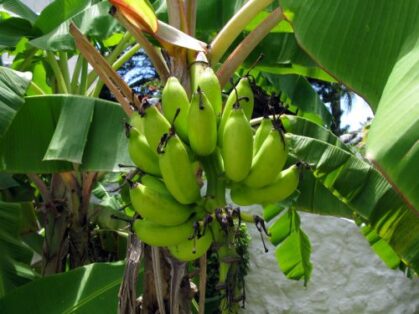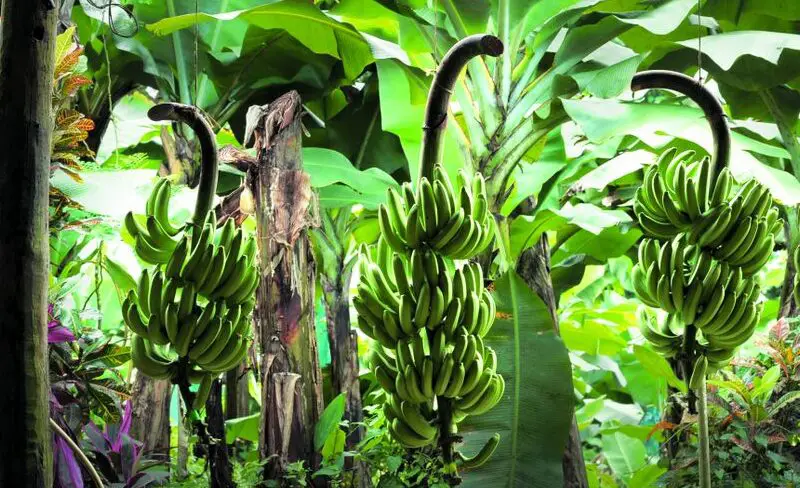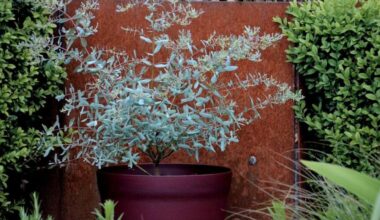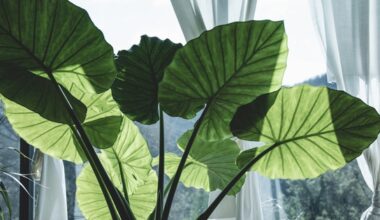The banana you eat for breakfast has been genetically manipulated to be seedless and the bananas you eat are usually Cavendish bananas. It is therefore complicated to grow a banana tree from a simple banana.
However there are of course many other varieties of bananas that contain seeds and you will have to find one if you want to get your banana tree from seed. Cavendish banana plants are propagated from pieces of rhizome that form miniature banana plants which can then be separated from the parent and planted to become a separate plant.
However, in the wild, banana plants spread well via seed, so of course this is quite possible. It is best to get seeds directly from the internet for example.
Contents
Plantation of the banana tree
In pot, banana tree indoors
The banana tree needs a good soil that you will eventually mix with 1/3 of compost if you have some.
In order to facilitate drainage, place a bed of gravel, small pebbles or clay balls at the bottom of the pot.
This will prevent the underground stems from becoming waterlogged, which could be fatal to them.
- Install your banana tree in a good size pot filled with special potting soil for houseplants or green plants.
- Although it is necessary to repot it in spring every 2 to 3 years, apart from that, prefer a regular surfacing which will fill perfectly the need of the plant in support of culture.
- In inside, avoid the direct sun because it dries out the foliage too quickly.
- From mid-May it is possible to take out your banana tree and leave it outside until the end of the summer.
Outdoor banana tree
For outdoor banana cultivation, choose a hardy variety of banana tree.
The planting period is in spring and summer.
As for pot planting, do not hesitate to lay a bed of gravel, small pebbles or clay balls to facilitate drainage.
You will then plant it in a mixture of potting soil, garden soil and sand.
Generally speaking, the banana tree does not tolerate the cold winter weather, it will then tend to lose its foliage from 2° and must be protected in winter.
But it should start again the following spring because its roots are more resistant to the cold, down to -19°. Tropical banana trees do not resist temperatures below 10° and can only be grown in greenhouses.
Maintenance of the potted banana tree
For indoor potted banana trees, misting is essential and watering must be regular. However, the surface of the potting soil should be allowed to dry before watering. Outside as well as inside, watering is less in autumn and winter.
Fertilize your potted banana tree at least once a month. You should use a fertilizer rich in magnesium, potassium and nitrogen to promote the plant’s development. In spring or summer, the potted banana tree can be fertilized every week.
It is recommended to place your potted banana tree in a place where it receives indirect sunlight. During the summer months, you can place it outside in the shade of other trees. Turn the pot regularly so that all sides of the plant can receive sunlight.
The ideal temperature for growing a banana tree is between 26 and 30°C.
You should prune your potted banana tree after 6 to 8 weeks of sustained growth. During its development, the suckers will start to grow. Prune them all so that only one sucker is left. To do this, choose the biggest and healthiest one.
If the banana tree starts to bear fruit, then it is recommended to prune it again. After harvesting the bananas, cut the banana tree so that it measures about 75cm.

Banana tree watering
Indoors, it is important to regularly mist water on the foliage to recreate the conditions of its natural environment which is rather humid.
For beautiful growth and foliage you can add green plant fertilizer.
Watering in spring and summer
This is usually the growth period for the banana tree.
For potted bananas, water regularly while letting the topsoil dry between waterings.
Outdoors, watering should be regular but measured so as not to asphyxiate the plant’s roots.
It can be said that watering every 2 to 3 days is often necessary, especially in the case of heavy camel traffic.
Every 15 days or so, you can give it liquid fertilizer, taking care to moisten the soil beforehand.
Watering in autumn and winter
Start by gently reducing the watering as the plant has more limited needs.
As soon as the soil becomes dry for a few centimetres, water so as to moisten all the soil.
Finally, it is necessary to stop all fertilizer application from October until March-April.
Why doesn’t my banana tree produce bananas?
If you want to have bananas indoors with your banana tree it will be necessary to recreate the tropical conditions of its natural environment, in particular :
- Duration of sunshine approximately equal to that of the night
- High ambient humidity
Summary
The bananas that we buy in the shops are mostly genetically modified, so they don’t have seeds, so it is impossible to grow a banana tree simply from a banana!
The banana tree is not a shrub but a herbaceous plant because it has no trunk. It is said to be the largest grass in the world.
While sub-tropical banana trees adapt to our climates, tropical banana trees are jelly-like and should only be grown in greenhouses, winter gardens or indoors.
Both aesthetic and very easy to grow, it is one of the most popular indoor plants for houses and apartments.









